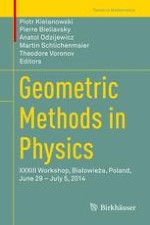This book presents a selection of papers based on the XXXIII Białowieża Workshop on Geometric Methods in Physics, 2014. The Białowieża Workshops are among the most important meetings in the field and attract researchers from both mathematics and physics. The articles gathered here are mathematically rigorous and have important physical implications, addressing the application of geometry in classical and quantum physics. Despite their long tradition, the workshops remain at the cutting edge of ongoing research. For the last several years, each Białowieża Workshop has been followed by a School on Geometry and Physics, where advanced lectures for graduate students and young researchers are presented; some of the lectures are reproduced here. The unique atmosphere of the workshop and school is enhanced by its venue, framed by the natural beauty of the Białowieża forest in eastern Poland.
The volume will be of interest to researchers and graduate students in mathematical physics, theoretical physics and mathematmtics.
